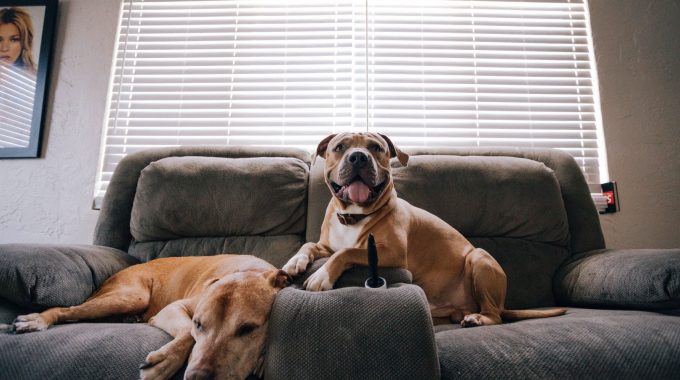
Simple Tips for Pet-proofing your Home
Pets such as dogs and cats are considered by many as treasured family members. However, just like toddlers and small children, these animals are also prone to getting into mischief. But that should not prevent you from owning a pet. There are simple pet proofing tips that can help you make your home cleaner, more organized and safer for your pet.
1. Get down to their level, literally.
Getting down on your hands and knees allows you to see things from your pet’s perspective. You may be able to see dangling wires under furniture, game pieces under the sofa, exposed electrical cords and other things that may pose a danger to your pet. Give special attention on small openings and spaces where your pet might possibly squeeze in and strangle or suffocate itself. Block those areas with a strong board.
2. Add child-proof locks to cabinets.
Some agile cats and dogs may be able to lock themselves inside your cabinets, causing suffocation and eventually death. To avoid this, installing child-proof locks can prevent your pet from getting inside. Additionally, check carefully your cabinets and any enclosure before closing them. Your cat or dog may have sneaked in when you were not looking and could be locked inside without you knowing it.
3. Keep things out of your pet’s reach.
Dogs have a tendency to chew on things from shoes, toys, furniture and other things that are within their reach. You can avoid this menace by making sure that all things are secured inside a drawer or cabinet. Moreover, if your dog has a favorite spot in your furniture to chew on, spray or wipe it with lemon juice, since most dogs don’t like its taste. You could also give your pet a chewable toy to keep itself busy.
4. Use safety gates for stubborn pets.
Many younger dogs easily get bored indoors and are therefore more prone to getting into trouble. This is especially true for untrained puppies that are always looking for something to do or chew on. To keep them in a place where you can easily keep an eye on, a child-safety gate may be helpful for you.
5. Don’t leave foods on top of tables or countertops unattended.
Leaving foods anywhere in the kitchen uncovered and unattended may attract the attention of your dog or cat, causing it to reach them. You can prevent this from happening by putting foods in secured containers and somewhere your pet will not be able to reach them.
6. Use clear tape strips on upholstery where your pet normally sits.
While some owners allow their pet to sit or sleep on couches, sofa and other upholstery, some consider it as a no-no. To discourage them from going to these places, you could make use of clear tape strips for places where your pet may want to hang out but are not supposed to.
If you consider it okay for your pet to hang out on these places, you can protect your priced sofa or couch from their nail scratches by using a thick throw blanket. It would also be good to invest in a slipcover or cushion that you can easily remove and wash when needed.
7. Keep toxic products inside locked cabinets.
Toxic chemical can be fatal to animals, causing them to suffer from serious conditions and eventually death. Prevent pet exposure to these chemicals by keeping your cleaning agents, pesticide, herbicide and other products containing toxic chemicals inside locked cabinets or drawers.
8. Always close your bathroom doors after use.
Toilet and water-filled bathtubs look attractive by cats and dogs as they see these facilities as a thirst-quenching bowl. But they are dangerous places to drink water from because pets can drown or feel ill if the water is contaminated with cleaning or bathing products. Be sure to keep your bathroom doors closed to prevent your pets from going in.
9. Create a designated area for eating, drinking and littering.
Don’t allow your pet to eat, drink water, and litter anywhere. There should be designated places for these activities to avoid clutter. As a pet owner, it is important to provide a food and water bowl as well as a litter box that your pet can use.
10. Train your pet.
Pets can be trained to be sociable and well-behaved. Start training your pet at an early age. Aside from tricks, it is important to teach your pet some basic things such as eating and littering only in designated areas, not to chew on furniture and other things, and to behave properly especially when around other people. Training is very important to bring out the best behavior and temperament of your pet.
if you are planning to own a pet, these pet proofing tips can help you get started.
